Samsung Galaxy S23 Ultra vs Google Pixel 7 Pro: the battle of Androids
We may earn a commission if you make a purchase from the links on this page.
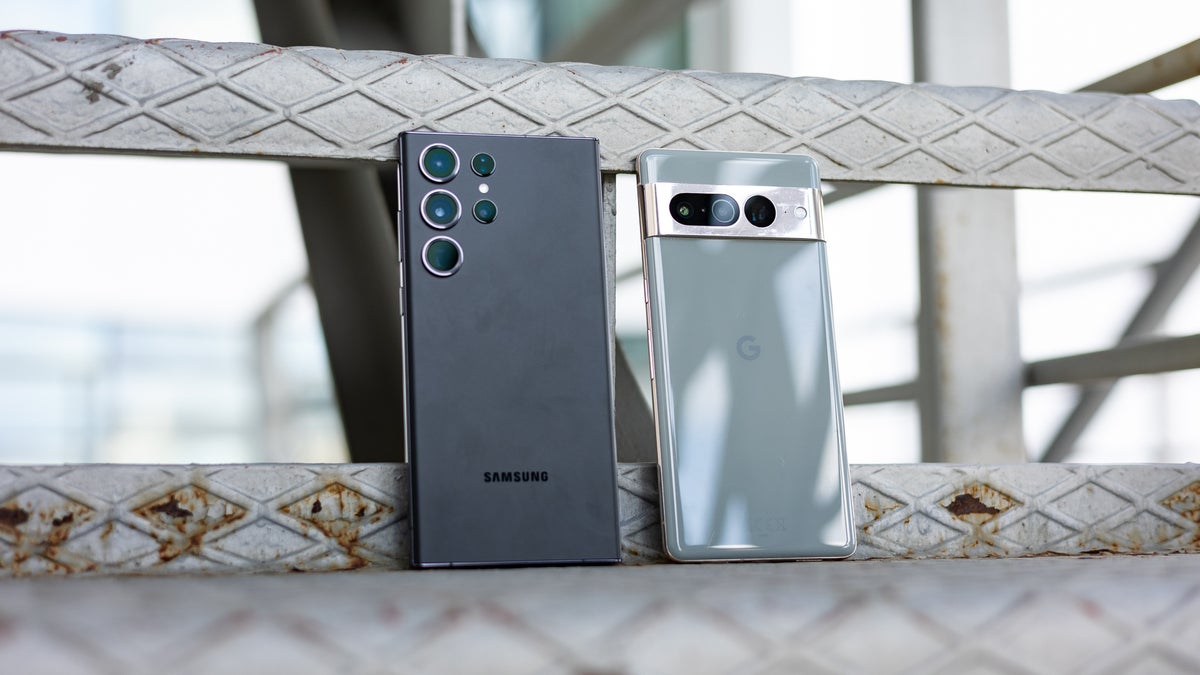
Intro
With a faster chip and improved cameras, the Samsung Galaxy S23 Ultra is a major upgrade and probably the most versatile Android phone out there. This means that it has all the ingredients to be the best Android phone of 2023, but it first has to clear one hurdle and that hurdle is the Google Pixel 7 Pro.
After years of trying with the Pixel series, Google finally got it right with the seventh generation Pixel. It has a mostly worry-free experience and undercuts the Galaxy in price by a significant margin. The Pixel also comes with the camera quality needed in this flagship camera battle and it has the unique advantage of being a Google phone and getting Android updates faster than any other Android phone.
So let's dive deeper in the Galaxy S23 Ultra vs Pixel 7 Pro differences, and find out which one would be a better fit for your needs. Read on!
Samsung Galaxy S23 Ultra vs Google Pixel 7 Pro in a nutshell:
- Galaxy uses newer and more advanced screen tech
- Galaxy comes with an S Pen
- Faster Snapdragon 8 Gen 2 in Galaxy
- Faster storage (UFS 4.0)
- Higher res main camera (200MP on Galaxy vs 50MP on Pixel)
- Galaxy has two zoom cameras, while Pixel has one
- Both have 5,000mAh battery sizes, but Galaxy supports faster charging (45W)
Table of Contents:
Read more:
Design and Display Quality
S23 Ultra comes with the newest in OLED screen tech
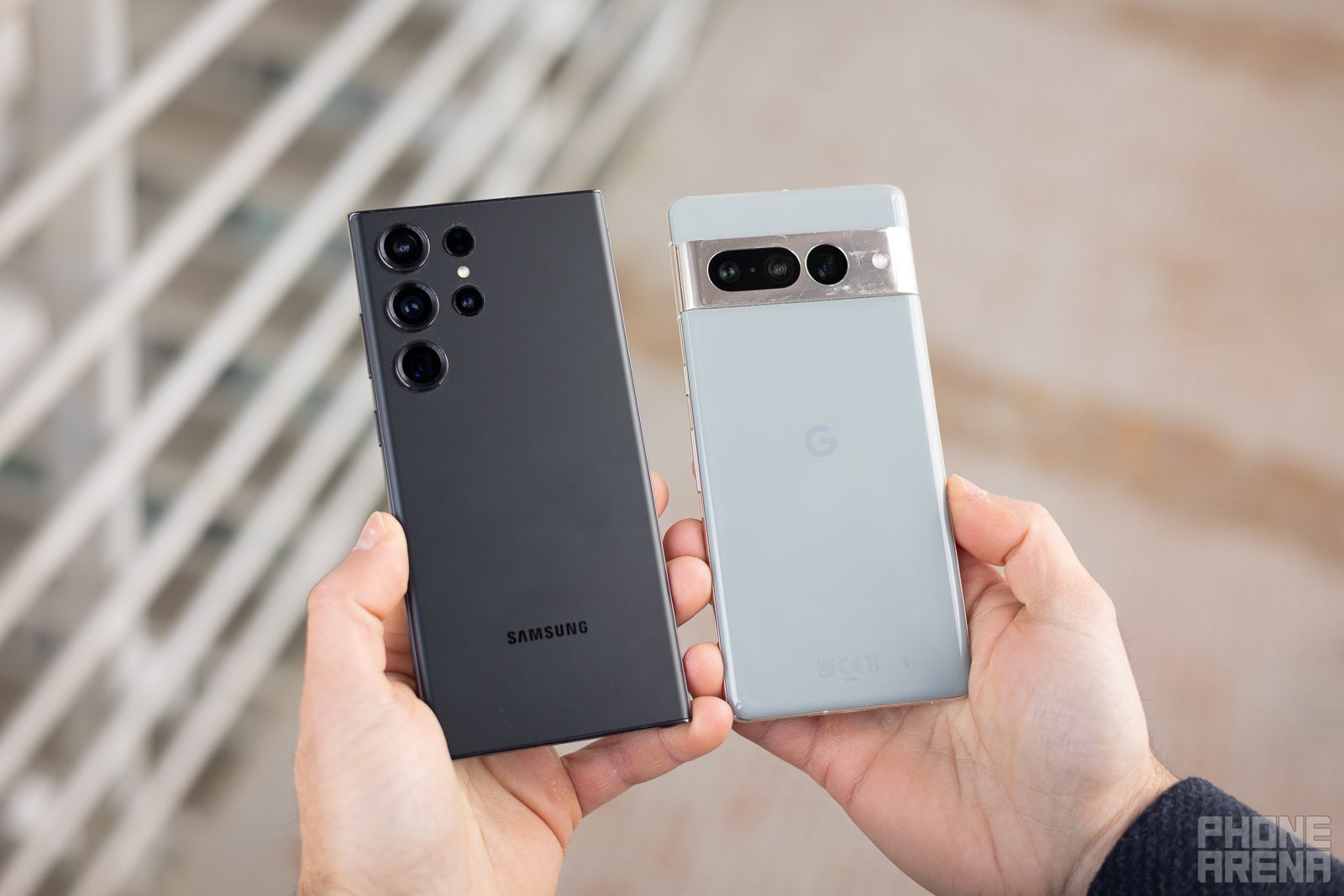
(Image Credit - PhoneArena) The S23 Ultra is bigger and heavier than the Pixel 7 Pro
It's easy to tell these two apart as both the Galaxy and the Pixel have a distinct visual style. The Galaxy comes with unique sharp corners, while the Pixel has more traditional rounded corners but a very noticeable camera strip on the back.
In terms of size, the Galaxy is noticeably wider and harder to hold with one hand, and it is the heavier phone too.
And while the overall design of the S23 Ultra mostly matches the previous S22 generation, one little change are the flatter sides of the phone. This makes it a bit easier to pick the phone up from a table for example, and we were surprised at how much it improved our experience in real world use.
The Galaxy also comes with the S Pen inside. For some people, this alone is the reason to buy a Galaxy over any other phone, and those people probably don't need any more advertisements for the S23 Ultra.
Casual users can still appreciate having the S Pen always there for a quick note or to sketch something on the go. But there is also a group of people who would never or very rarely use the S Pen, and for that group, it just seems like a waste of space, so the S Pen might actually be a disadvantage for those consumers.
Both the Galaxy and the Pixel feature IP68 water and dust protection certification, but that is kind of expected and most high-end phones have that these days. Both also lack a 3.5mm headphone jack, another common trend for modern phones.
Both the Galaxy and the Pixel come in slim boxes where you will NOT find a charger. That's become the norm in the flagship space recently, so it's not a surprise. You will find a type C USB cable in the boxes, but again no charger, no case for the phone, and no headphones on either one.
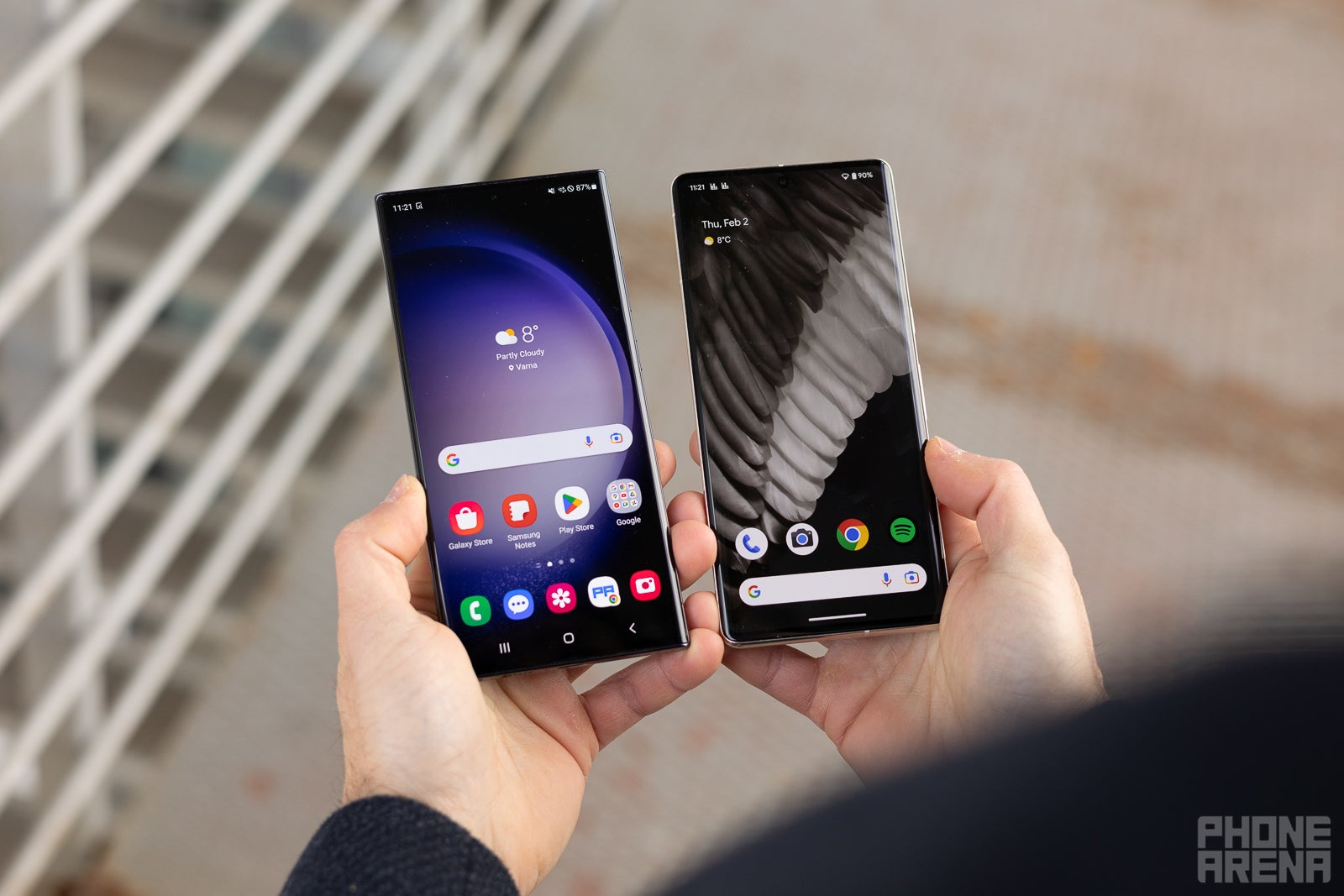
(Image Credit - PhoneArena) Both phones have large OLED screens with gorgeous colors
On the front, both have slightly curved screens, but the one on the Galaxy is larger and has a slightly wider aspect ratio.
In terms of refresh rate, the two use LTPO technology and support dynamic refresh rate that can go up to 120 Hertz.
For biometrics, the Galaxy uses an ultrasonic fingerprint scanner built in the screen, while the Pixel relies on an optical type sensor, also integrated in the display. A sluggish fingerprint scanner was the biggest concern on the previous Pixel 6 Pro, so we are happy to see that this new one is now faster and more reliable.
Both phones also support face recognition using an image. This has its limitations: it works poorly in dim light and is not very secure, but it's nice to have the option nonetheless.
Performance and Software
Snapdragon 8 Gen 2 goes RAWR
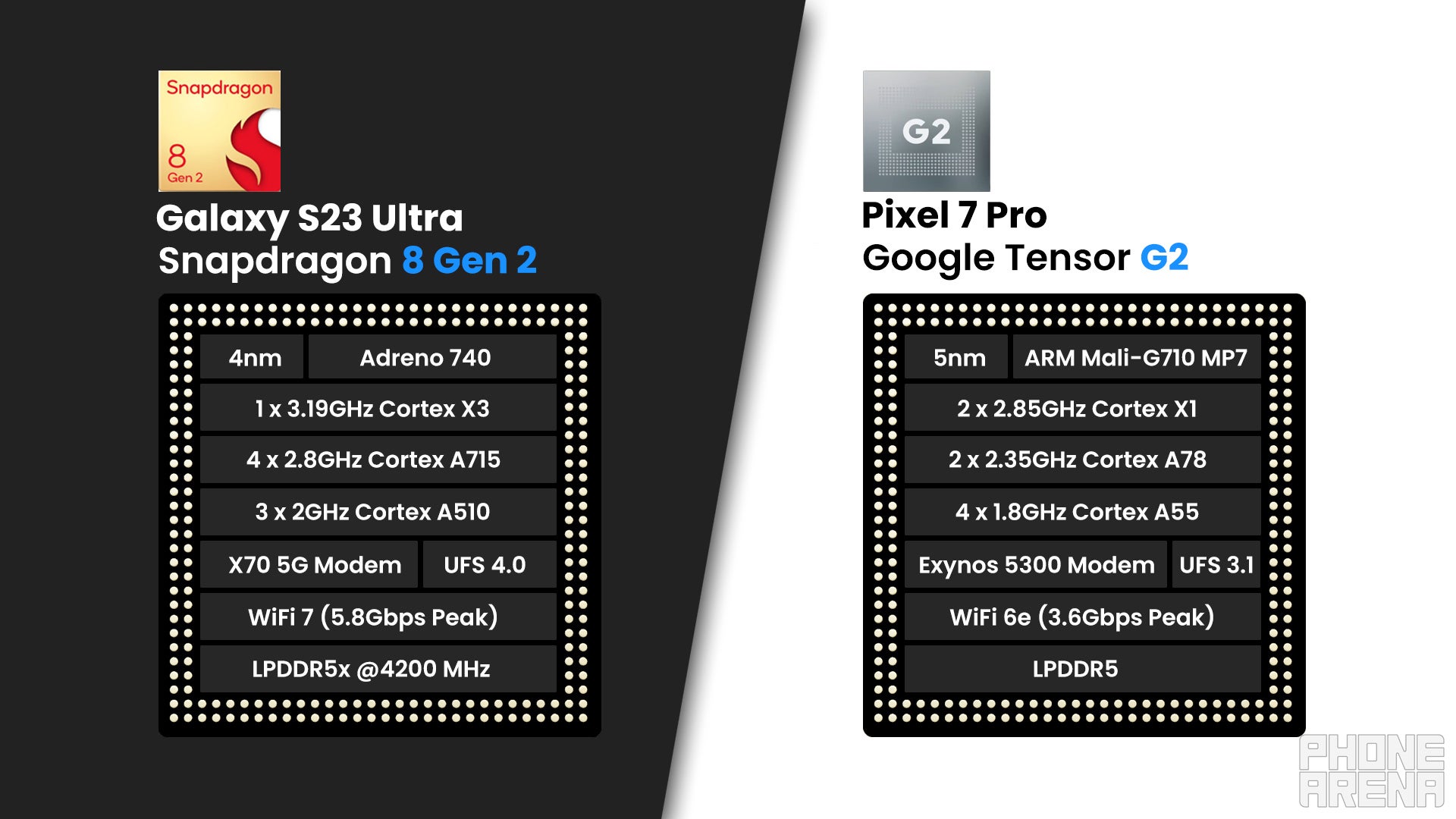
Under the hood, the Galaxy S23 Ultra being the newer phone also ships with a faster processor, the Qualcomm Snapdragon 8 Gen 2. But the really good news is that Samsung no longer splits the series in two versions (it used to have one model with a Snapdragon chip, and another one with an inferior Exynos chip), and will instead ship a Snapdragon version to all markets.
The Pixel, on the other hand, uses the Google-made Tensor G2 chip. As you will see below, the Tensor G2 is definitely not as fast as the Snapdragon 8 Gen 2. Google, however, is saying that benchmarks are not what you should be looking at, but instead this chip is focused on having fast machine learning processing, powering unique Pixel features like an incredible accurate and fast voice to text transcription.
Performance Benchmarks:
As the benchmarks above demonstrate, the S23 Ultra is a huge leap in performance! It has nearly 50% faster single-core and multi-core CPU speeds and even bigger improvements for gaming.
The Snapdragon 8 Gen 2 also comes with the new X70 modem, which promises better signal reception and faster speeds on 5G. The Pixel 7 Pro uses an Exynos 5300 modem, which might not be as new, but also does a very decent job, and many people report that this new modem gets them way better signal reception and far fewer dropped calls than the Samsung modem which was used on the Pixel 6 Pro.
In terms of software, we have Samsung's latest One UI 5.1 running on top of Android 13 on the Galaxy S23 Ultra, while the Pixel runs on a clean version of Android 13 with the Material You interface by Google.
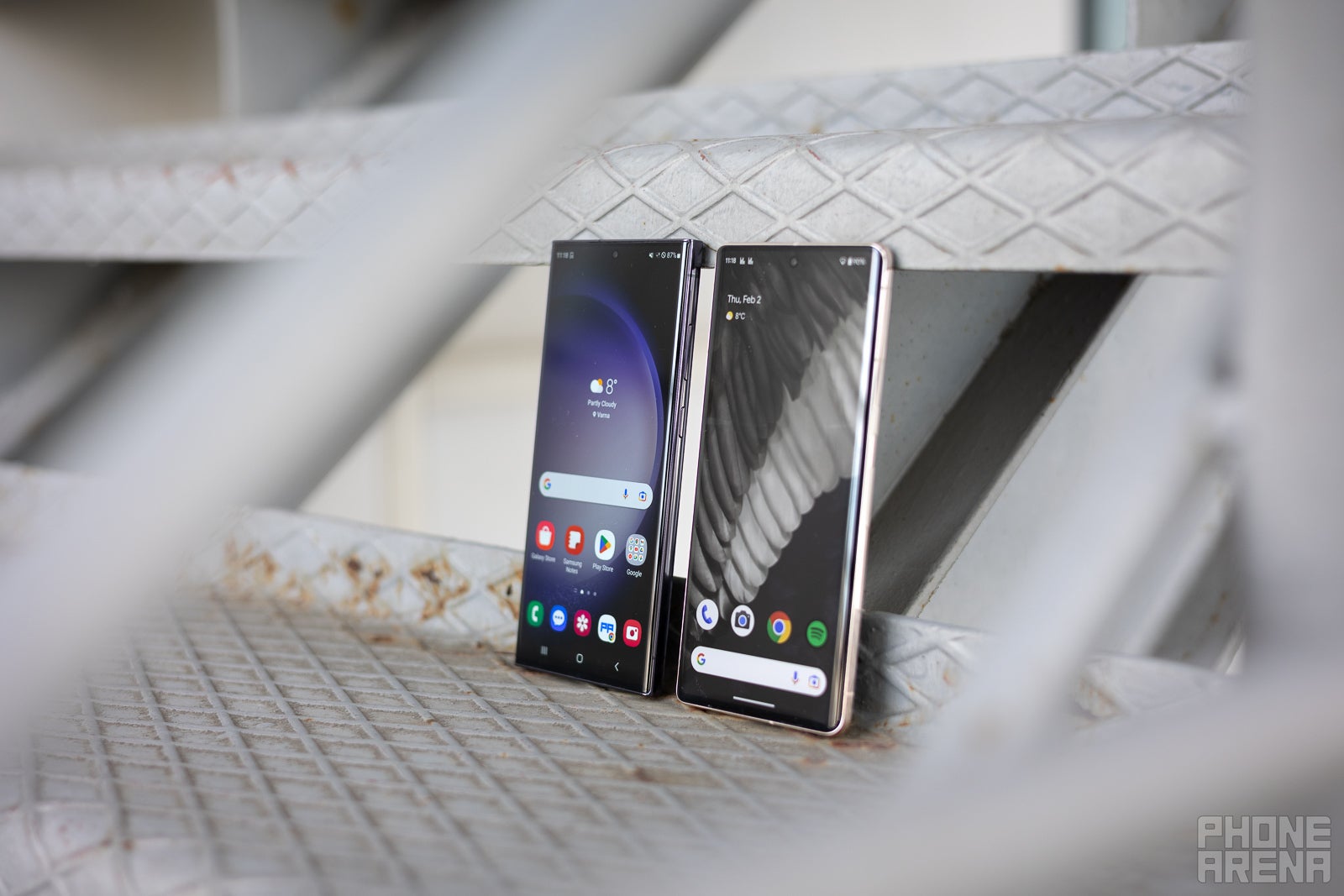
(Image Credit - PhoneArena) S23 Ultra on the left, Pixel 7 Pro on the right
With bolder font sizes and overall visuals, the Pixel looks more modern, but we know many people who are actually turned off by that excessive styling and prefer the more traditional look of the Samsung One user interface. We will leave that to personal preference.
But what about software support? The Galaxy S23 Ultra comes with four years of major software updates and five years of security fixes, which is longer than the three years of major updates and four years of security fixes for the Pixel 7 Pro.
Samsung is definitely the company that delivers the longest Android support for its phones and that is appreciated, but you have to remember that it still takes Samsung at least a few months to bring those updates, while with the Pixel you just get them on day one, it's a much faster process.
Camera
New 200MP main camera on S23 Ultra steals the show
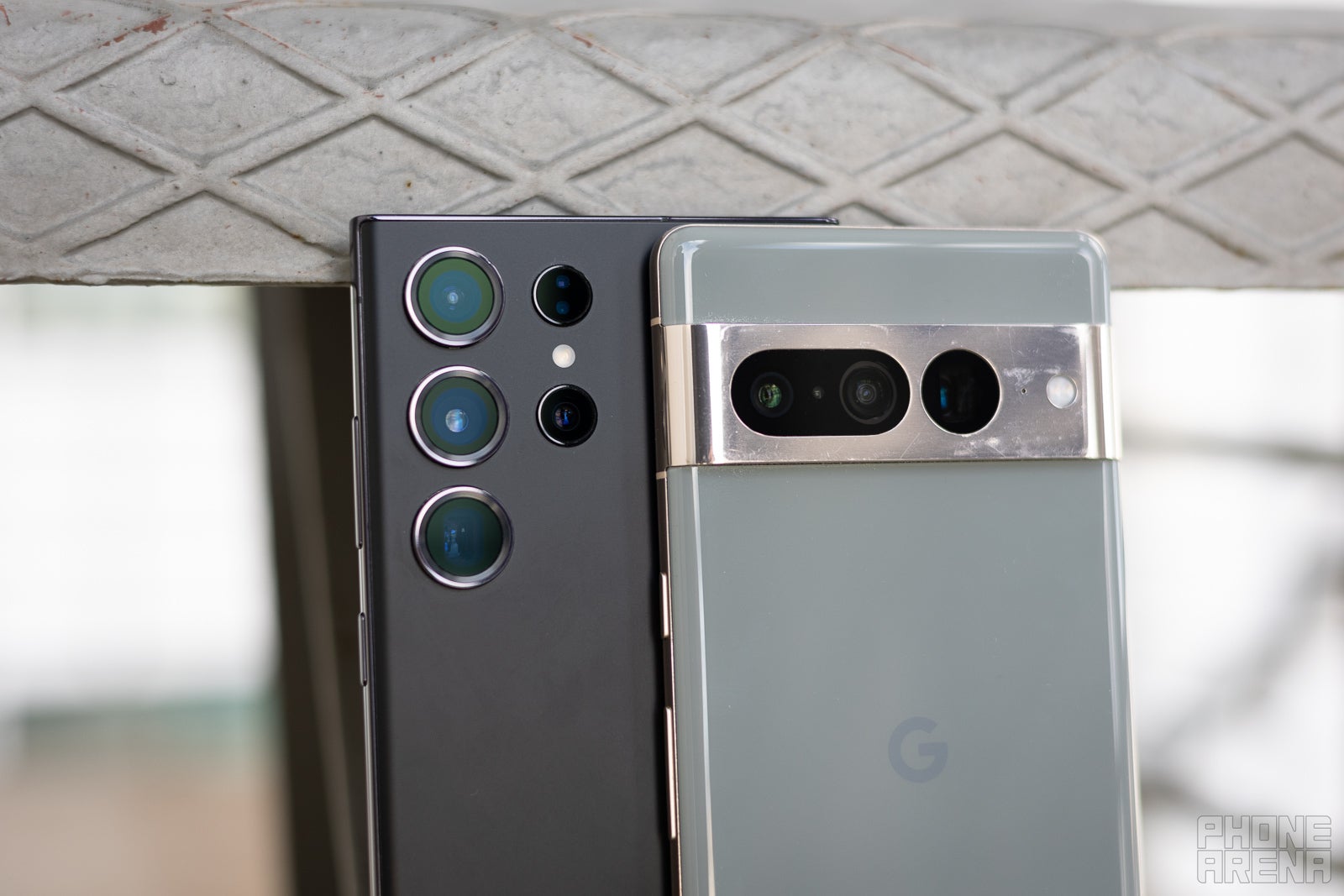
(Image Credit - PhoneArena) The Galaxy has an extra zoom camera
With a quad camera system on the back, the Galaxy S23 Ultra remains a dominant force in the flagship space and one of very few phones to have two zoom cameras. The Pixel 7 Pro, on the other hand, has a triple rear camera.
The big highlight this year is the brand new 200MP main camera sensor on the S23 Ultra. You still get 12MP shots by default as the phone combines sixteen of those pixels from the sensor into one super-pixel, but those shots perform better in low light and produce cleaner detail all around.
Let's take a look at a detailed camera specs comparison below:
| Camera Specs | Galaxy S23 Ultra | Pixel 7 Pro |
|---|---|---|
| Main Camera | 200MP, 23mm, f/1.7 1/1.3" sensor size | 50MP, 25mm, f/1.9 1/1.31" sensor size |
| Ultra-wide | 12MP, 13mm, f/2.2 1/2.55" sensor size | 12MP, 14mm, f/2.2 1/2.9" sensor size |
| Telephoto #1 | 10MP, 3X zoom, f/2.4 1/3.52" sensor size | - |
| Telephoto #2 | 10MP, 10X zoom, f/4.9 1/3.52" sensor size | 48MP, 5X zoom, f/3.5 1/2.55" sensor size |
| Front Cam | 40MP, AF, 4K | 10.8MP, AF, 4K video |
Below, you can find a comparison of the two cameras:
Main Camera - Good Light
Both phones do an excellent job in good lighting, but the Galaxy stands out with its brighter exposure and more cheerful colors.
- Read more about the Galaxy S23 Ultra camera
Main Camera - Dusk
In these photos just before sunset, the Pixel captures a more natural looking image, while the Galaxy looks a bit overprocessed in the first picture. In the second shot, you can notice the excessive sharpening on the Galaxy which results in this halo around the wires that you don't have on the Pixel.
Main Camera - Low Light / Night
At night, these two capture amazing shots, but the Galaxy has the edge: notice the colorful lights illuminating the building are burned out on the Pixel and the Galaxy also has the cleaner detail.
Ultra-wide
The Pixel captured these quite dark shots during the day, and while it was not a sunny day out, these are definitely underselling it and make it all look just a bit too gloomy. The Galaxy might go a bit overboard with saturation, but it has captured much better looking shots.
In lower light, the ultra-wide camera on the Galaxy again captures more impressive shots, even with this noticeably overprocessed look in the bar, while the ultra-wide camera on the Pixel just lacks a bit in detail.
Portrait Mode
Samsung has continued improving the already excellent portrait mode on the Galaxy and these shots look incredible. The Pixel has a horrific looking portrait mode, which lacks detail and... well, just looks bad.
You can notice the difference in quality even better in these night time portrait shots where the Galaxy S23 Ultra really impressed us.
Selfies
The slightly wider selfie camera on the Pixel allows you to capture a larger group of people easily, which is a nice feature. However, the Pixel insists on capturing noticeably underexposed photos, while the Galaxy has a more pleasing look with more lively colors and a nice exposure.
We will be updating this section with additional photos and videos over the next couple of days, so make sure the check back in a while.
Audio Quality and Haptics
The Galaxy and the Pixel feature a very similar audio setup with no dedicated 3.5mm headphone jack and with two loudspeakers, one in the bottom of the phone and a helper speaker in the earpiece of the phone at the top.
However, the sound quality from those loudspeakers is slightly different. The S23 Ultra comes with a big improvement in loudspeaker quality compared to earlier Samsung phones. Compared to the Pixel 7 Pro, the difference is not as huge, but the Galaxy is just a bit more impressive. Voices on the new S23 Ultra come out just a bit cleaner and you have a bit more bass than the Pixel. The overall sound profile is richer and you do notice.
We feel that haptics have been another area, which Samsung could improve in the future with tighter vibration feedback.
Battery Life and Charging
5,000mAh batteries on both
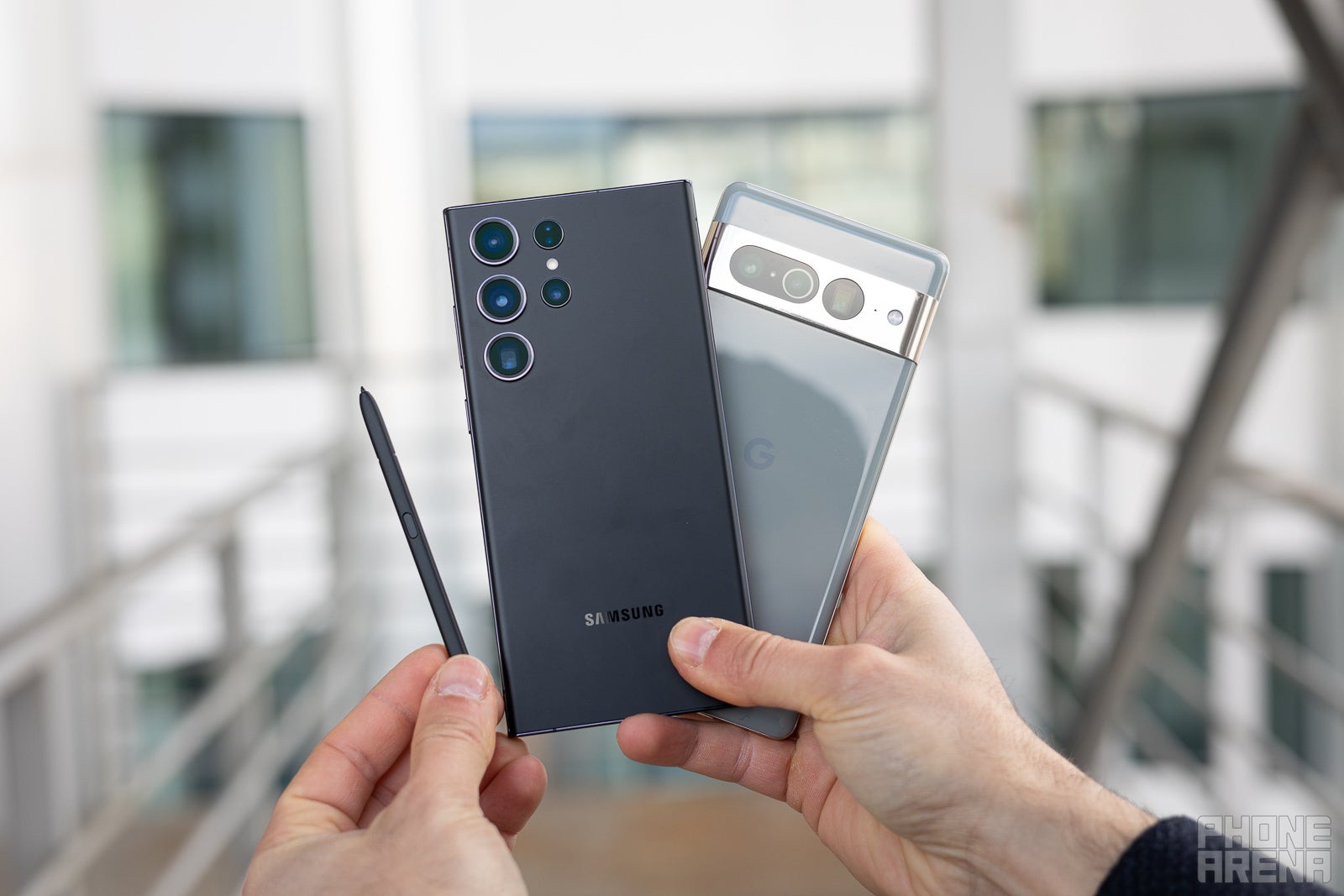
(Image Credit - PhoneArena) The Galaxy scores longer battery life than the Pixel
Most Android flagship phones have settled on a 5,000mAh battery and it's kind of become the norm in the space, and that is what both the S23 Ultra and the Pixel 7 Pro have as well.
That's good news: 5,000mAh is a solid size and unless there is a problem with the processor sipping too much energy, this battery should last you well over a day on average.
We haven't heard exact battery life estimations for the Galaxy S23 Ultra, but below are our three independent battery tests which give you the exact numbers of how it compares to the Pixel 7 Pro.
In terms of charging, there is no charger included in the box with either phone. The Galaxy supports charging speeds of up to 45W, but that requires a more expensive and quite big 45W charger as well as a thicker than usual 5A cable. Most users would probably find the default 25W Samsung charger be just enough and top up that battery in slightly more than an hour, same as the previous generation.
The Pixel 7 Pro, on the other hand, supports 23W charging speeds, so it is definitely slower and a full charge on it takes around 1 hour and 40 minutes.
Both phones also support wireless charging, and have the neat reverse wireless charge feature, which allows you to use the phone itself as a power bank and place a pair of wireless buds or a smartwatch on the back of the phone to juice them up.
Specs Comparison
Here is a quick overview of the specs on the S23 Ultra and what's different compared to the Pixel:
| Specs | Galaxy S23 Ultra | Pixel 7 Pro |
|---|---|---|
| Dimensions | 163.4 x 78.1 x 8.9mm | 162.9 x 76.6 x 8.9mm |
| Weight | 233 g | 212 g |
| Screen | 6.8" OLED, M12 panel* 1440 x 3088 pixels, 19.3:9 aspect ratio 120Hz dynamic refresh rate (LTPO) 2,150 nits max brightness* | 6.7" OLED, E4 panel* 1440 x 3120 pixels, 19.5:9 aspect ratio 120Hz dynamic refresh rate (LTPO) 1,500 nits max brightness |
| Processor | Snapdragon 8 Gen 2 | Google Tensor G2 |
| RAM and Storage | 8GB LPDDR5 RAM + 256GB storage 12GB RAM + 512GB storage 12GB RAM + 1TB storage | 12GB LPDDDR5 RAM + 128GB UFS 3.1 storage 12GB RAM + 256GB storage 12GB RAM + 512GB storage |
| Cameras | 200MP main camera 12MP ultra-wide 3X zoom telephoto 10X zoom telephoto 12MP front camera | 50MP main camera 12MP ultra-wide 48MP 5X zoom telephoto 10.8MP front camera |
| Battery Size | 5,000 mAh | 5,000 mAh |
| Charging Speeds | 45W wired 10W wireless reverse wireless charging | 23W wired 23W wireless reverse wireless charging |
| Price | from $1,200 | from $900 |
*Samsung and Google do not officially disclose the display panel technology they use. This data is based on web research and third-party sources and is NOT official.
Don't forget that we have an in-depth Galaxy S23 Ultra vs Pixel 7 Pro specs comparison here.
Summary and Final Verdict
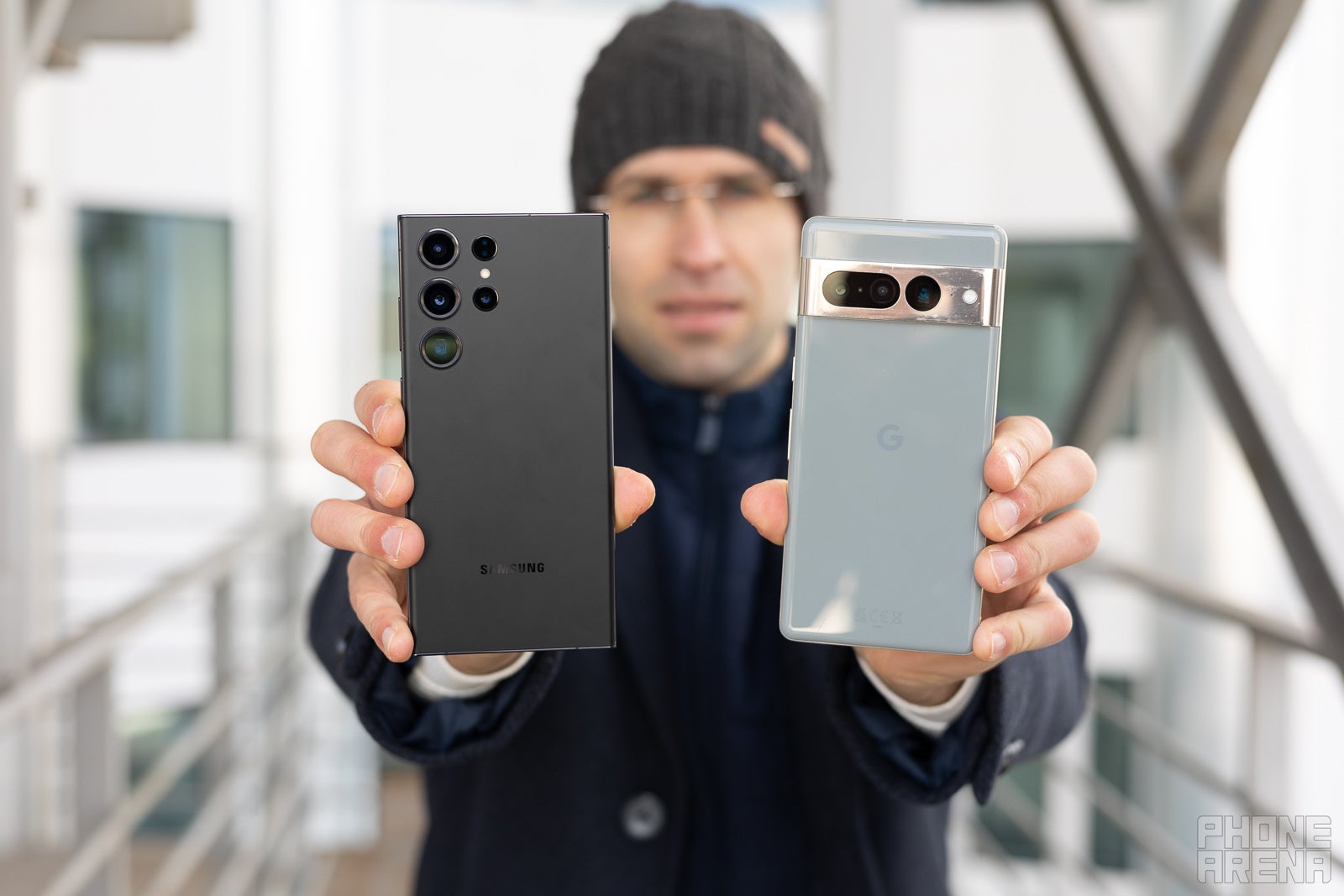
(Image Credit - PhoneArena) S23 Ultra on the left, Pixel 7 Pro on the right
So, should you buy the Galaxy or the Pixel?
The big advantage of the Galaxy is the faster Snapdragon 8 Gen 2 chip, which beats Google's Tensor G2 in most tasks easily. Secondly, the Galaxy debuts a new 200MP camera technology, which matches and in some cases beats the Pixel. You also have more capable zoom, 8K video capture, the S Pen and a few other advantages like a newer generation OLED screen.
But you also have to take into account the software. The Samsung One UI experience is full with customization possibilities, while the Pixel interface feels cleaner and a bit better optimized.
Last but not least, it's also about the price difference. The Pixel 7 Pro is downright affordable compared to the Galaxy with a starting price of $900 compared to $1200 for the Galaxy.
So... which one would you go for? And which phone do you think wins the title of "the best Android flagship of 2023"?
Follow us on Google News

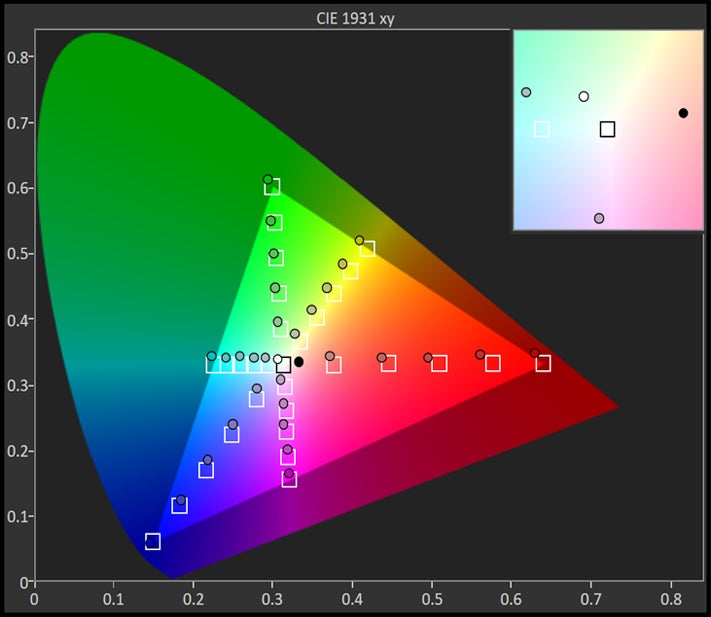
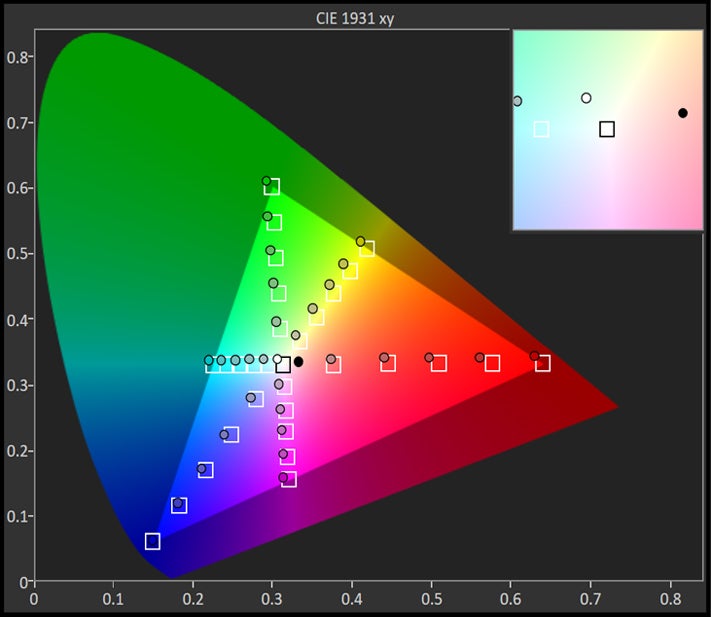





































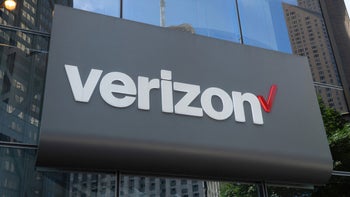
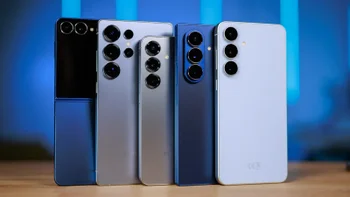
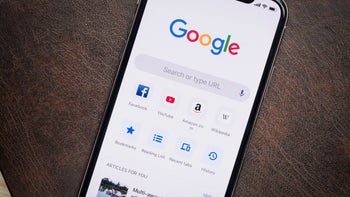

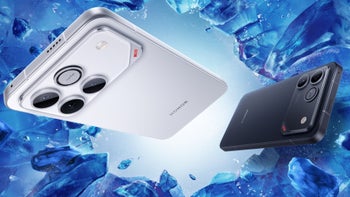

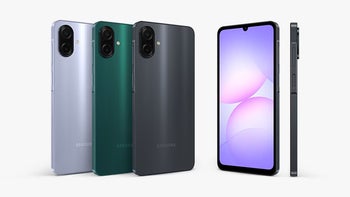

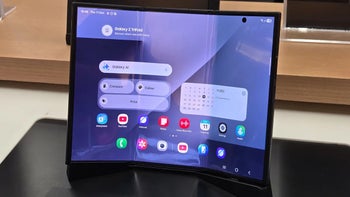
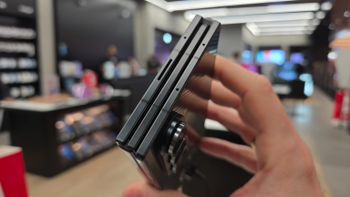
Things that are NOT allowed:
To help keep our community safe and free from spam, we apply temporary limits to newly created accounts: